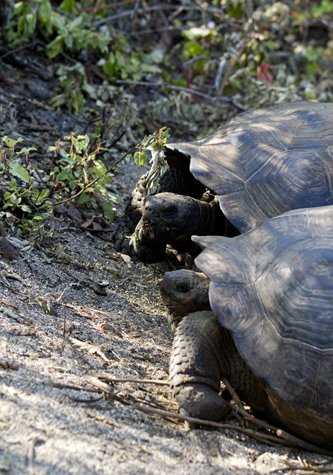Isabela Island is the largest island in the Galápagos, created by the fusion of six enormous shield volcanoes, which give rise to the characteristic “seahorse” shape of the island.
This morning we landed on the western coast of Isabela, at the site named Urbina Bay, located at the base of Alcedo Volcano. In 1954, one and a half square kilometers of the marine reef off the coast of Urbina Bay was uplifted almost instantaneously. Nowadays you still see remnants of this occurrence along the trail: white coral heads, sea worms, barnacles are all sort of marine creatures that were left high and dry when this event took place over 50 years ago. Bones of sea lions, pelicans, sea turtles and land tortoises along the trail, gave us a good idea of the anatomy and physiology of these animals. We also talked about the successful eradication program of feral goats that once menaced the survival of the prehistoric tortoises.
But that is not the only thing to see here. Our walk took us inland where we were able to spot many of the large land iguanas leaving in this area as well as some giant tortoises, our first giant tortoises in the wild. Vegetation was still green, and both land iguanas and tortoises were enjoying feeding on fresh plants. They all seemed completely relaxed in our presence. There was lots of activity with the Darwin finches, as is the time of the year they are all busy nesting and reproducing. The morning was hot and humid but very rewarding, especially at the end of our long walk with a refreshing swim at the beach.
During lunch time, while savoring many wonderful Ecuadorian dishes, our ship took us back north a few miles to visit the historic bay of Tagus Cove, one of the places visited by Charles Darwin in 1835. Historic graffiti can be found near the landing, as whalers and wayfarers over the centuries use this cove as a sheltered harbor and easy access to the island.
We explored this site by snorkeling the dark waters of the cove, where many turtles and curious flightless cormorants followed the groups, while others preferred to explore the shore by kayaking. Later on, the day was not finished, and many of us had the chance to take an invigorating hike up to the rim of a tuff cone overlooking Darwin Lake and beyond, while others took long Zodiac rides to admire the coastline of Isabela.
Back on the ship at sunset, we had a full day new experiences, lots of information to process and of course hundreds of pictures to organize!









